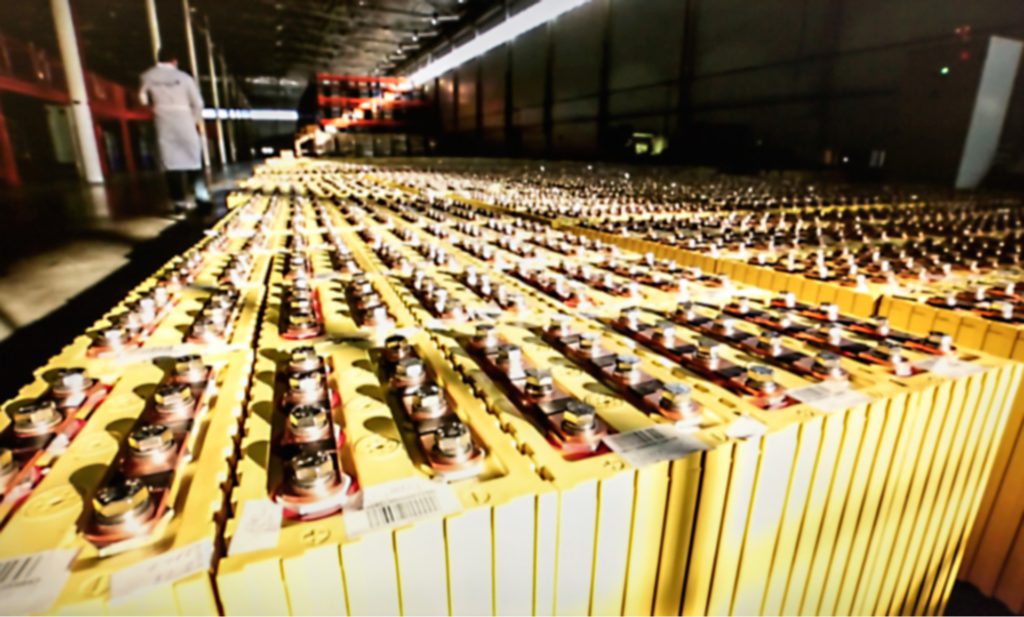The browser you are using is not supported. Please consider using a modern browser.

How Batteries Are Shaping Our Energy Future

It powers your phone. It powers your laptop. It is even starting to power many of the cars produced today. And in the future, it will likely be responsible for powering your home.
With a high energy density, low maintenance requirements, and a relatively low self-discharge rate (meaning it does not lose its charge over time as much as other battery technologies), the lithium-ion battery is destined to play an integral role in our electric grid.
In this post, we analyze the lithium-ion battery market to see exactly what that role is.
Why Renewables Need Batteries

Some forms of renewable energy have gotten to the point where they are competing with fossil fuels on cost. In fact, in some instances, they are beating them.
However, fossil fuels have always had one advantage over most renewables. They can create electricity on demand.
The most popular renewables, like wind and solar, can only produce electricity under certain conditions. Solar cannot produce any energy at night. Wind won’t produce any energy unless the wind is blowing. A fossil fuel like coal, however, can be mined and can produce energy in any condition.
Without a viable way to store renewable energy, it will always be dependent on another form of on-demand energy, to cover those inevitable gaps in production.
This is where the lithium-ion battery comes into play.
With these batteries, the excess energy produced by renewables can be stored. This stored energy can then be used to cover for the times when the renewables are not producing energy.
This is not a new concept. It is a straightforward solution to this problem. So why has this not been implemented into our energy system?
Well, in the past, storing electricity in lithium-ion batteries at the scale required for an electric grid was extremely cost-prohibitive. But the price has been dropping… fast.
The Price Of Energy Storage

The price of energy storage is complicated and hard to pin down. The best estimate puts the levelized cost of electricity (LCOE) at $187 per megawatt-hour (mWh). That is according to a report by BloombergNEF, an organization that researches and analyzes “industry-transforming trends,” including the energy industry.
It is important to note that estimates vary. For instance, the National Renewable Energy Laboratory (NREL) puts the price of these batteries at $380 per kilowatt-hour (and 1 megawatt-hour = 1,000 kilowatt-hours).
How are the prices so different? It could be due to a variety of factors, but the main factor is the method of measurement.
BloombergNEF’s report takes the levelized cost of electricity (LCOE), while the NREL report states the upfront capital cost.
The LCOE, according to energy.gov, “measures the lifetime costs divided by energy production” and allows you to compare different energy technologies on an even scale.
Using a measurement like the LCOE is important because capital cost only tells part of the story. Put simply, if an energy solution is cheap upfront but has large maintenance costs, it may end up costing more in the long run than an energy solution that is expensive upfront but does not cost much to maintain.
The BloombergNEF report goes on to state that at this price, renewables can realistically compete with other forms of energy. Of course, these numbers could be wrong. In fact, the NREL states in their report that measuring the price of energy storage is difficult and that their estimate is likely off.
But that is not what is important here. What is important, is that every report you find on energy storage notes its rapid decline in price. Even if it can’t compete now, these projections mean it likely will in the future.
The Future Of Energy Storage
The BloombergNEF report states the price of energy storage has dropped 76% since 2012.
The NREF report projects further price reductions by as much as 70% by 2030.
More than that, investment in energy storage is expected to go up. A recent report by Wood Mackenzie, a research firm for the energy industry, predicts that the US energy storage market will increase by over 8x, going from $645 million today, to $5.4 billion by 2024.
This is not just purchases by the energy industry either. Although front-of-the-meter purchases are expected to take up the largest portion of this increase, behind-the-meter is also expected to make a dent.
Front-of-the-meter vs Behind-the-meter
In the most basic sense, front-of-the-meter is energy delivered to your home that you have to pay for. It is the energy your utility company delivers to you.
Behind-the-meter is energy that does not go through your meter. If you have an energy storage device that you own, and that storage device is used to power your home, that is “behind-the-meter.”
With batteries becoming more affordable, these energy storage devices may become more popular.
This is good for both the utility companies and the customers. These storage devices help take the pressure off the grid and decrease the cost of electricity. According to this Motley Fool article, these storage devices help utilities from having to buy energy from “expensive peaker plants” in times of high energy usage. These electricity savings can then be passed on to the customer. Challenges That Lie Ahead For Lithium-Ion Batteries

Although prices for lithium-ion batteries are expected to be increasingly cost-effective, there are still challenges that lie ahead. Here are the main issues:
- Lithium-ion batteries get hot – Lithium-ion batteries get hot after heavy use and can even catch on fire. This is extremely rare but can happen. Instances of these fires will certainly catch media attention and could slow the adoption of the technology.
- Lithium-ion batteries only last so long – While they are better than other battery technologies, lithium-ion batteries still lose their capacity over time. This means that they will have to be replaced at a certain point. Manufacturers will have to make them cheap enough, or last long enough, to make them cost-effective.
- Lithium production demands – There is plenty of lithium on earth, but there is a worry that the ability to scale lithium production to keep up with the ever-increasing demand. This could mean limited lithium supply in the short-term.
These problems may never manifest. The benefits of these batteries will likely outway the small fire risk. The technology may advance and become cheap enough that the loss of capacity will become a non-issue. And lithium production may overcome the hurdles and keep up with the demand.
But if any of the problems do manifest, there are other options.
Seeing these issues, many companies are working on different types of battery technology. Vanadium-flow batteries could be a solution. These batteries do not catch on fire, they do not degrade nearly as fast as lithium-ion batteries, and we produce twice as much vanadium over lithium each year.
However, until these batteries can start to compete with lithium-ion batteries on cost, they likely won’t be able to beat them. And with how cheap lithium-ion batteries are, it is likely that they will be leading the charge in our world’s energy future.
